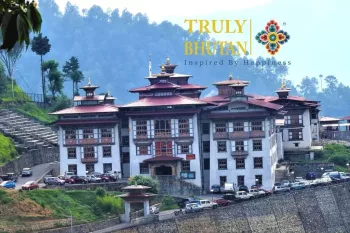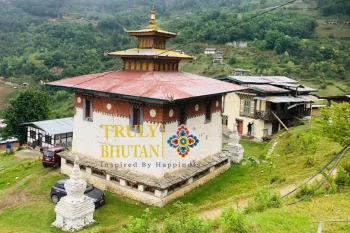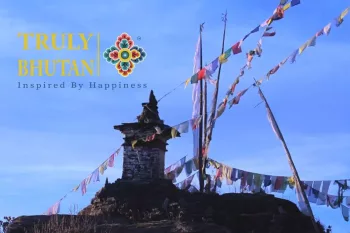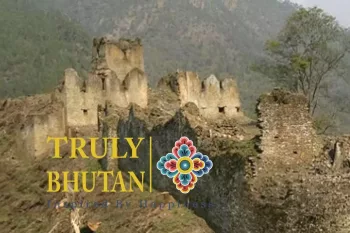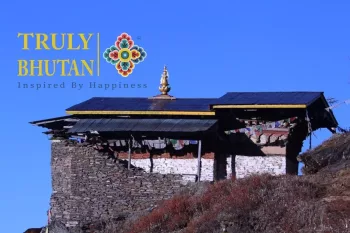The History of Drametse Lhakhangy & Ani Choten Zangmo
Ani Choten Zangmo, Pema Lingpa’s granddaughter, took off from Bumthang to avoid a proposition of a wedding from the resident king who found Drametse Lhakhang. She fled east and when she discovered a place admirably suited for meditation and practice, she referred to it as ‘Drametse’ which means ‘the peak where there are no rivals’.
Ani Choten Zangmo’s Kudung (remains) is secured to this day in the monastery as the most remarkable monument.
Further, Drametse was blessed by the birth of three successive incarnations of the Zhabdrung:
- Jigme Drakpa (1791-1830),
- Jigme Norbu (1831-1861),
- Jigme Chogyel (1862-1904).
They present many religious festivals with sacred masked dances every year. Out of the many masked dances, the Drametse Ngacham (Drum dance of Drametse) is the most famous and well-recognized in the region.
The Famous Drametse Lhakhang & Ngacham Masked Dance
It is claimed that Lama Kunga Gyeltshen, brother of Ani Choten Zangmo, in a visionary state reached Zangdo Pelri (the Utopia) of Guru Rinpoche where he witnessed the appearance of this dance. Upon his return to the mortal world, he introduced the practice of this dance in Drametse and thereafter it spread extensively and was identified as the Drametse Ngacham.
Other masked dances include the religious dances known as the Peling Tercham or the Treasure Dances of Terton Pema Lingpa, which are entirely presented during these festivals. These dances include Peling Gingcham and Rujen performed during the burnt offering (Jinseg) and Shagpadre, Tseumara, and Serdra Chham.
The Spiritual Significance of Drametse’s Religious Dances
These dances are to be regarded as a true display of Mandala representing particular deities or supernatural drives. The function of the dance, both for the dancers and the observers is one of freeing from ordinary dreams and sentiments. The spirit of these masked dances is thus to bring about inner attainment and ritual dances locally known as Tercham performed in most of the festivals in Bhutan originated from Drametse Lhakhang.
We identify the religious dances as the specific endowment to the lay community as these dances represent the visionary practices of absolute understanding by the heavenly beings such as Terton Pema Lingpa. Drametse is thus the primary center of the Pema Lingpa lineage and likewise the spiritual and cultural focus in eastern Bhutan.

